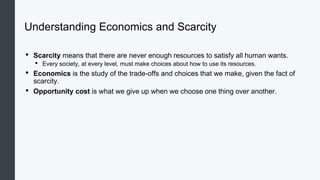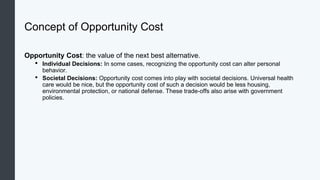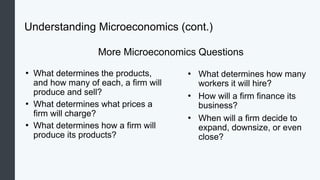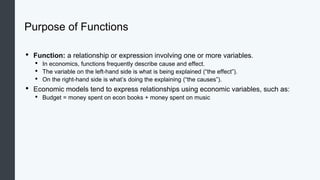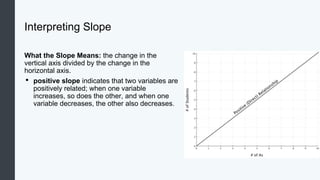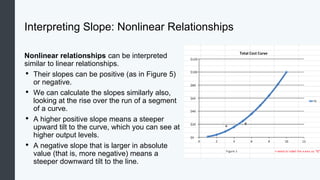This document provides an overview of key economic concepts including:
1. Scarcity means resources are limited and choices must be made, while economics studies trade-offs. Productive resources like labor, capital, land and entrepreneurship are inputs for production.
2. Opportunity cost is the value of the next best alternative forgone. It is important for individual, societal and policy decisions. Specialization and trade exist because individuals can use income to purchase goods and services they do not produce.
3. Microeconomics focuses on individual agents like households and firms, while macroeconomics examines economy-wide issues like growth, unemployment and inflation. Economic models like the circular flow diagram simplify reality to provide insight. Functions

